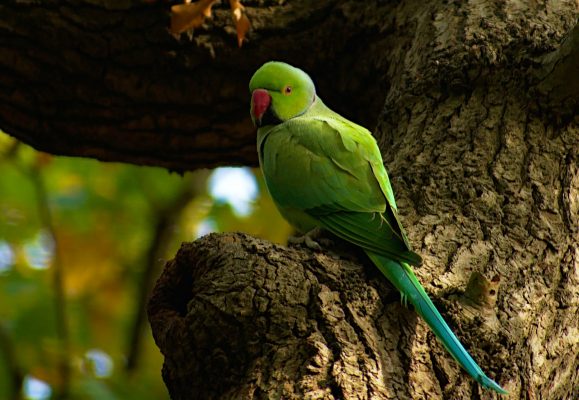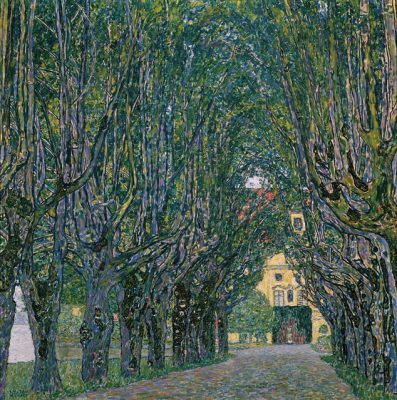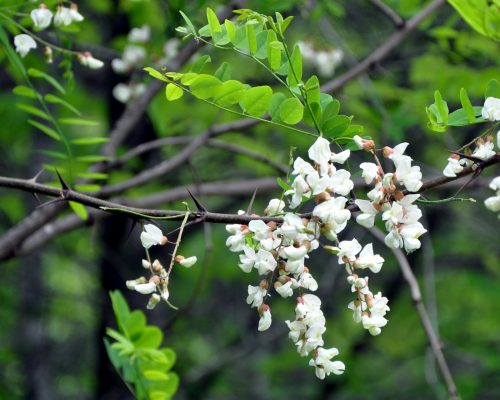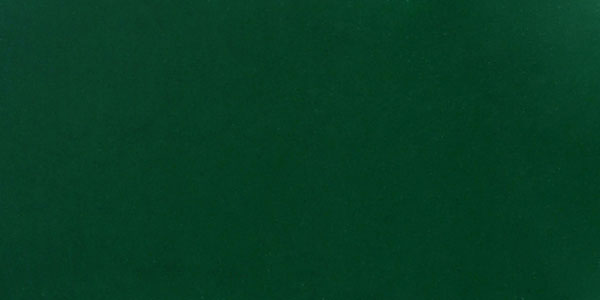My parakeets fly over us at dusk. There are maybe 40 of them. They fly low, not low enough to touch or to get caught in the knotted mess of our unbrushed hair but low enough to startle, to arrest our upward glances by creating fine streaks of green. Low enough for them to gather speed in the gully of this long city road, this passageway between Victorian terraces with their mirrored uniformity. The birds do not care for the details of these two-storey houses in the way that the new homeowners do, eyeing the contours of their frontage, their turreted bays alternating between doorways. The birds are here for the passages between them, pacing their flight along its narrow run. The gully is long enough for them to gather speed after they collect en masse at the eastern end, by the new café covered by the graphic designer’s showy mural. From here they rush, unleashed and gathering velocity, to the road’s end, the western tip where suddenly they veer right, towards the glare of the dying sun.
Contact improvisation is Steve Paxton’s term. Paxton is a dancer that another dancer, Yvonne Rainer, once described as being able ‘to move like butter around a room’ – a phrase so delicious it is impossible to forget. Paxton danced with Rainer, among others, in the early 1960s, forming a school of postmodern dance now most often associated with Manhattan’s Judson Memorial Church. Contact improvisation is a form of dance that he established a decade later, in the early 1970s, fusing the repetitive pared down moves of the Judsonites with some of the intuitive mirroring of movement that he had come to learn in a study of aikido, a modern Japanese martial art. It is a partner dance form, a form danced a deux, and it is based on the physical principles of touch, momentum, shared weight and, most elementally, a shared point of contact. It encompasses processes of falling, rolling, of counterbalancing, of lifting. It encourages dancers to adopt special breathing techniques that will make themselves feel and therefore present as lighter to hold and lift, and allows them to be more attuned and responsive to their surroundings. It is a game of trust, a state of coinciding through and despite complex individual movements, avian in its ambition and its dependency on the shared intuition of group dynamics. Paxton designed the movement in the aftermath of a breakup from Robert Rauschenberg, with whom he had been in love for the best part of decade, during Rauschenberg’s short and isolated, but nonetheless committed, love affair with postmodern dance. Rauschenberg left Paxton by taking another lover, a poet, before leaving them both, and New York, forever.
Nightly, my parakeets fly fast and bold and with cohesion. They are synchronised, not like German swimmers or Russian ice dancers, but more like classical musicians playing glacial scores, sending minimal music into the vapours, music organised within repetitive structures and unsettled by shifting layers. In the confines of their flight path, the birds maintain a grid formation with outliers rising and falling, marcato, the direction played with emphasis along the group’s edges. The whole parade travels as if through intuited sequences rather than learned notes, with a joy that comes of synchronicity turned virtuosity, from creating a rhythm outside and beyond oneself. A sublimation.
Against the light of every season, they seem differently feathered, differently lit. Their tiny little bodies are dressed fabulously and almost entirely in lime-green feathers except for a bold contour around the neckline, where dark feathers run in a line from the beak, dipping beneath their jowl and rising upwards around the nape. We don’t see them upright of course, they are pure horizontal, darting past us like parading warplanes, like shooting stars.
The children and I walk southward along the busy road home from their school until the point we turn east at the western tip, onto our road. It is dusk: the birds charge towards us. My parakeets, I shout, as I am prone. My five-year-old asks what qualifies the ‘my’. You don’t own them, she clarifies. Perception, I begin, before an interruption: her older brother crashes to the pavement having tripped on some surface irregularity. His body crumples but he doesn’t cry. He is uncoordinated say the teachers, the psychologists, the therapists and doctors, prodding him and diagnosing him with a condition that judges his movements disorderly. His limbs and digits move in spontaneous response to the erratic messaging sent to them from his brain. I know his brain to be perfect, he is sharp, observant, funny, worldly, wordy. Mine. But from his grey matter the messages get scrambled, his wings and talons shoot off like strays. Daily he strives forward, irrespective of this, regardless of gravity. We accept that just as he moves, he will fall. But others don’t, the children his own age for whom we cannot find the collective noun, complex group formations so difficult to sustain. nevermindwhatpeoplesay.
A chatter is the parakeet’s collective noun. Rose-ringed parakeets, or Psittacula krameri, is the species that stalk my road, a subspecies of parrots originating in South Asia and Central Africa but thought (by Andrew Self in The Birds of London, 2014) to have been in the capital since at least 1893, taking first to the south east and west of the city, and several decades later, in 1930, spotted some miles east of our dwelling in Epping Forest. Those that live here most likely have grown up here, they come of many generations of Londoners. One might assume that climate change brings them here, like daffodils in December, another apocalyptic sign. But this is not why they came. These birds’ ancestors originated in remote and often freezing parts of the Himalayas – they are used to the cold, they are hardy and largely unfazed by wind, rain and frost. The flyways their forebears enjoyed were shaped by geological shifts, a continental crush, by the subduction of the Indian under the Eurasian tectonic plate, thrusting marine limestone upwards. From this movement settled arêtes and couloirs, the natural rises and dips of the mountainside through which the birds gathered and swooped along the mountainous ridge – an arc running east to west, west to east. Their descendants adapt to London’s contours, to valleys made of quarried stone and brick and poured concrete, to its ever-changing system of gorges and gullies and water and power systems. Seeing the city as sets, grids and gradients, of highs and lows and troughs and flyways, their sense of primitive movement remains intact. Their connection to their ancestry is not in tangent with the land. It is not demonstrated through touching one soil or demarcated plot, by relinquishing to stasis and gravity. Instead, it comes through navigating a territory’s crevasses and contours together in liberated synchronicity, in flight.
Why and exactly how the parakeets came is unknown, there are multiple theories and much speculation. First sightings in the capital date from the 1860s. In 2012, a census recorded 32,000 parakeets in London. By now there must be many more, spreading across the British Isles, west towards Cornwall, north to Aberdeenshire, the most northerly wild parrot population in the world. Interviewed by Nick Hunt and Tim Mitchel (The Parakeeting of London: An Adventure in Gonzo Ornithology, 2019), an unnamed ornithologist explains of the flyways, ‘They’re always in exactly the same place, to a few feet on either side. It’s like an invisible railway track in the sky.’ Theirs is a network of sky-bound tracks. Other chatters’ flight-paths intersect with ours in a network of adjoining roads, each named to mark a royal’s coronation, Balmoral, Buckingham, Windsor. Built at the end of the nineteenth century to coincide with the opening of London’s underground railway system, these developments were intended to accommodate new constellations of low-wage workers, with the underground services shuttling them back and forth into the centre of town. Initially, people were terrified of the prospect of descending into the darkness only to reappear 30-minutes later into the light, suddenly elsewhere. Posters were designed, commerce was promised, Liberty had a sale. It worked. New occupiers packed into lines of dwellings and into train carriages, all vessels systematically interconnected, plumbed and wired.
London’s invisible tracks exist for people too. Underground trains, undetectable from the streets above, extend across a vast network fifty metres down, pathways through which we travel rapidly in clusters. Once beneath we stay silent. We hold on tight to whatever rail we can, vigilant to all the outlines-in-motion around us. We make parallels or diagonals of our glances too so that we do not touch at all. The only noises come from the infirm, the drunk, the poor, the desperate, and children. They threaten this improvised choreography of separation, them with their physicality and volatility, maddened and laid open by need. They spoil the otherwise perfect performance of blankness, the act of wiping the life out of oneself for ease of passage. We elbow our way into subterranean carriages just to temporarily play dead in this tableaux mouvants.
The parakeets sleep in trees across London’s green spaces, gardens, parks and woodlands. In the gloaming, they travel from the spot where they eat to the one where they roost, a wasteland between a motorway and a railway line, dotted with allotments. They adopt their homes rather than build new ones. Parakeets are ‘secondary cavity nesters’ according to parrot expert, Dr Hazel Jackson, not ‘primary cavity nesters’ – they do not hollow out or weave together their dwellings but tease them from the other birds (starlings, woodpeckers and nuthatches), waiting for them to appear, vacated or poorly guarded. They are social animals, apparently, and would coincide harmoniously with the similar-scaled but for the home-grabbing. This is partly enabled by their noise, which scares the other birds away, and how they crowd small bird feeders, in a process of ‘competitive exclusion’ which allegedly destroys local ecosystems. In their perceived risk to conservation, the parakeets are less endangered by birds of prey than by successive DEFRA (the Department for the Environment, Food and Rural Affairs) administrations, which keep threatening to cull them in favour of ‘native birds’.
We moved onto their flyway almost four years ago. In the upstairs bay window is the desk where I work. My nose points on to the bustle of the narrow, traffic-jammed street and my eyes often follow. Across the road and two doors down policemen appear one lunchtime, knocking idly on the door in no panic or rush. They chat to neighbours and the builders opposite. It all seems amicable. I pound the keyboard shaping a conference paper due the following morning but keep looking out at the scene to speculate. They’re in the house now, rooting around. They’re there an hour, maybe more. What are they doing? The tempo of the forced entry is confusing, the police remain so unflustered. They both come outside, one takes off his blue rubber gloves, puts car keys in a transparent bag into a box in the boot of the police car and they sit inside, outside the house, parked on the double-yellow lines. Another vehicle arrives carrying two men, who offer cursory greetings. It’s an undertakers’ van. They emerge dressed in black suits and move swiftly and with a vim unfamiliar to the police. The suited pair guide a trolly up the short path, but it is too wide for the narrow doorway, so they leave it outside, wheels clipped so it doesn’t roll onto the pavement. Traffic gathers but their van is watched over by the police. Within five minutes the pair re-emerge with a zipped-up body-length bag. Its dark red colour corresponds with the fabric of the gurney on which they now settle and wheel this bundle into the back of their van before driving away. The finale is so clean, so measured. There is no police tape, no panic, no swarms, no tears or fluster, no screams, no lament. On a city road, a resident’s pulse stopped so services were called, and their remains removed. A secondary cavity became tertiary, quaternary, quinary… octonary, nonary, denary, oh no dear, my neighbour is dead.
When my father died in the care home in another country’s city, his country, I read a eulogy aloud to a small congregation (the pandemic had ensured a modest send-off). I spoke about the brent geese he’d watched flying over Dublin Bay, at whose seasonal return he had always marvelled. Their routine seemed uninspiring to me back then, before I left, before I became an emigrant, before he got sick, before he died and became past tense.
There is a word for opportunists like parakeets: they are hemerophiles, a species that adapts well to human environments. Germans call them Kulturfolger, a ‘culture-follower’.
The parakeets fly over us in summer. The days stay brighter later, and the sun is higher in the sky. Its line bows differently overhead than winter’s arc, their flyway adjusts to the gully behind the houses. And the us they fly over is different too. Men and women come and sit with me in my small back garden, we eat and drink. Culture-followers. The birds come later, summer’s nightfall, gliding over our noise towards the dying light, towards the buildings of the city, their heights and ever-changing peaks, silhouettes of gherkins, monuments, pillars and shards. Red light shrieks, and spills through the gaps between them, drawing them in, drawing us all in, migratory birds settled but moving still. There is life here at the edge of the city. We stay outside until it is over but there is no end. Chattering, in contact.
We pass through narrow doorways, vertical, horizontal. Seasons pass living away. Belonging is a strange bird.




